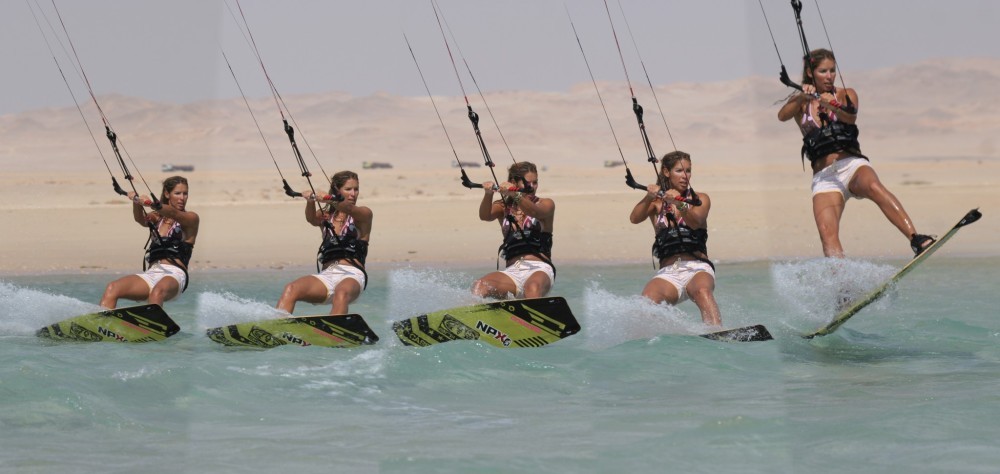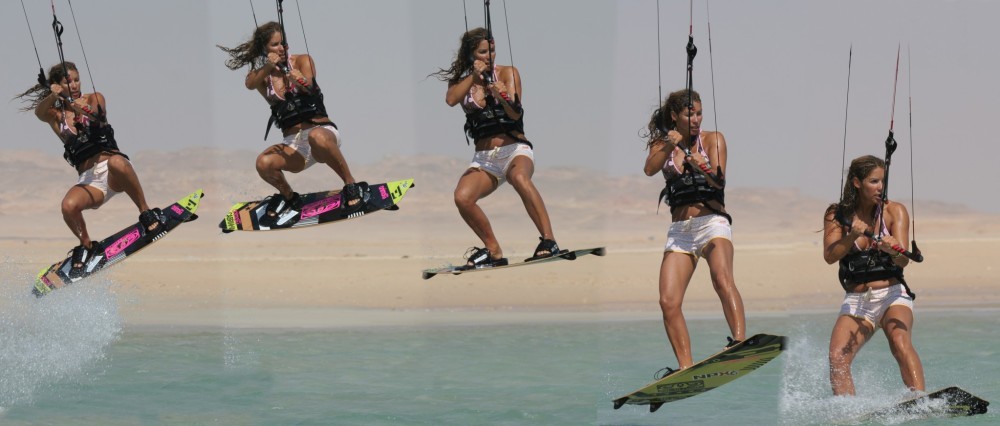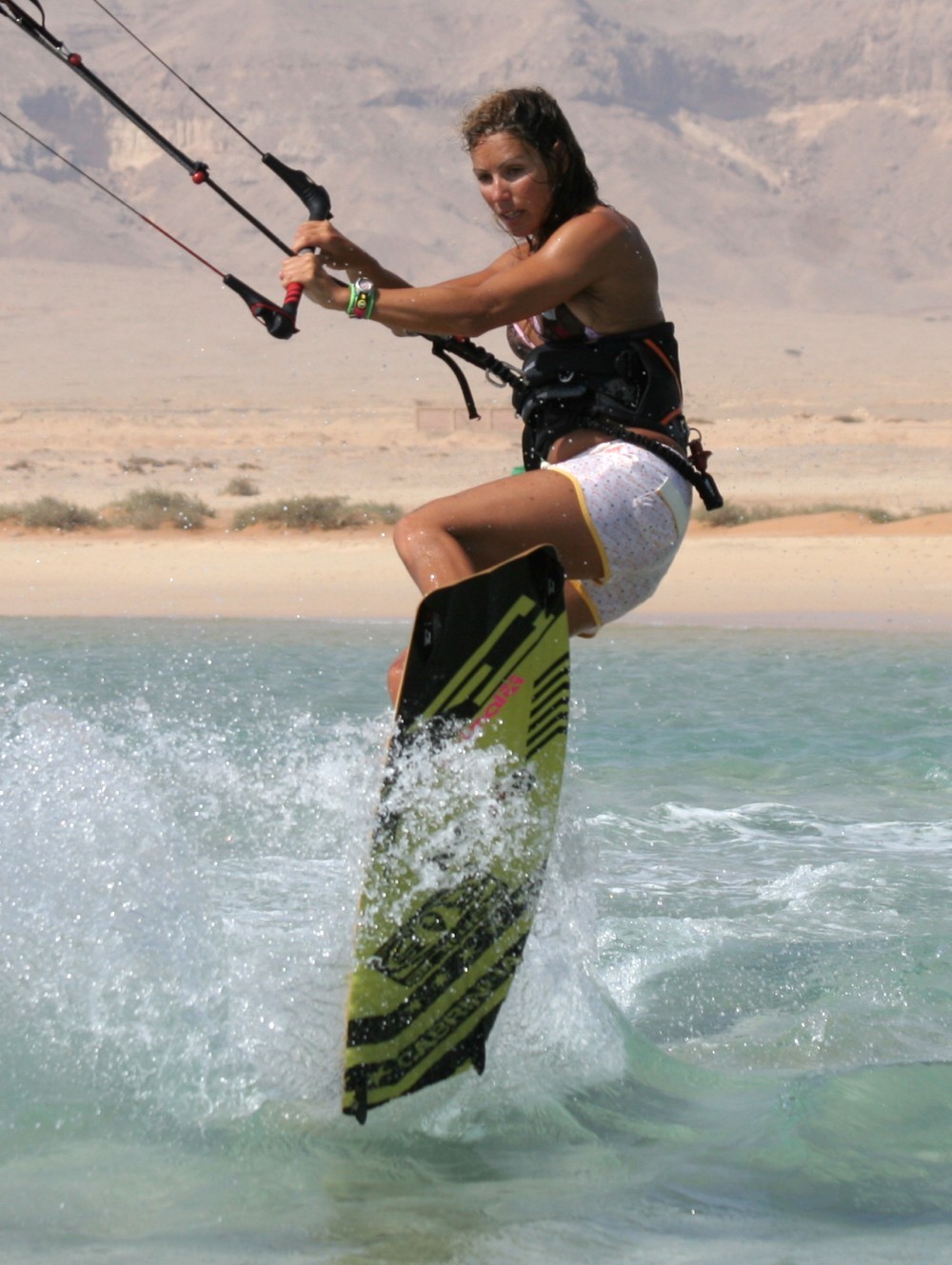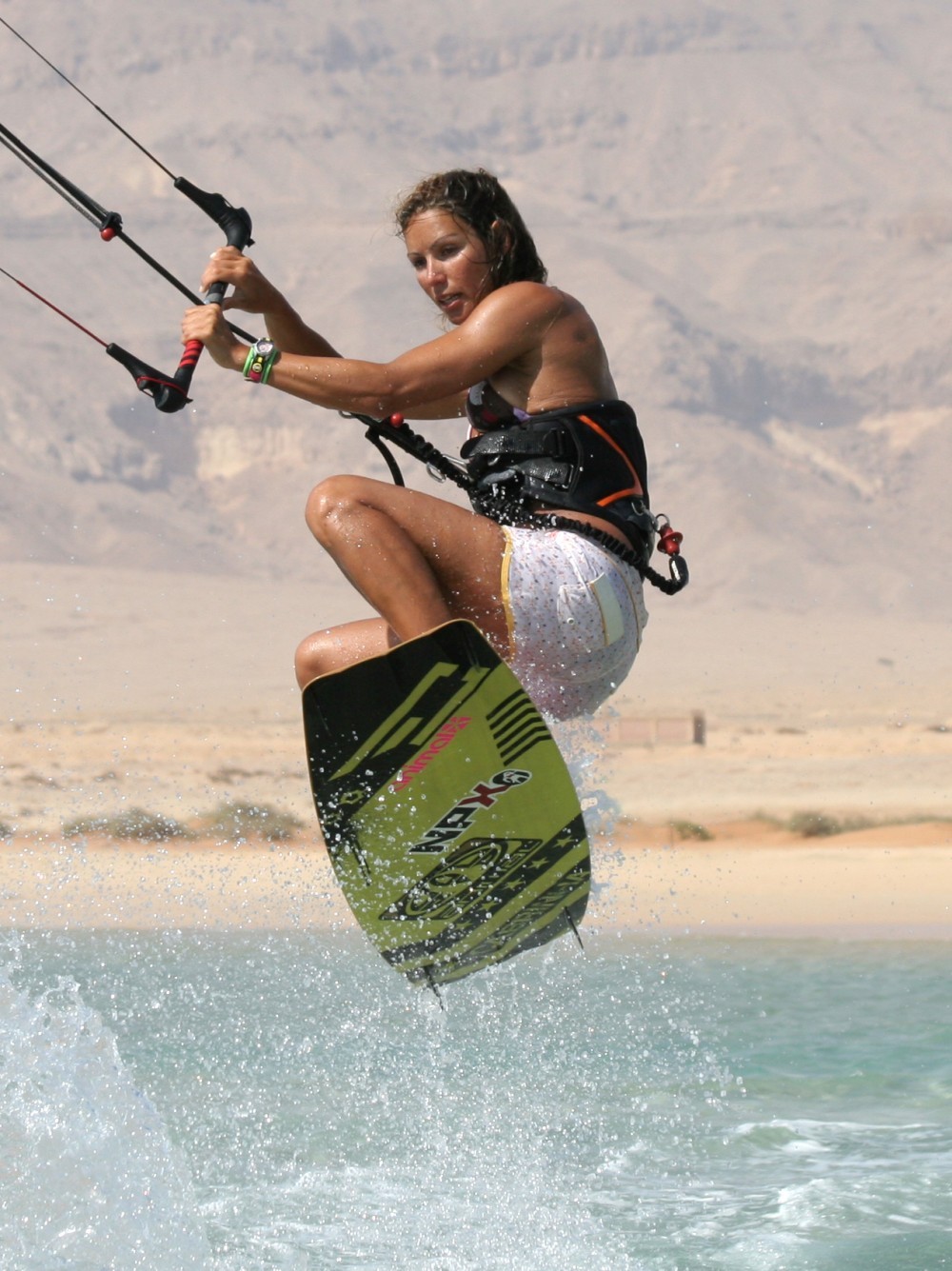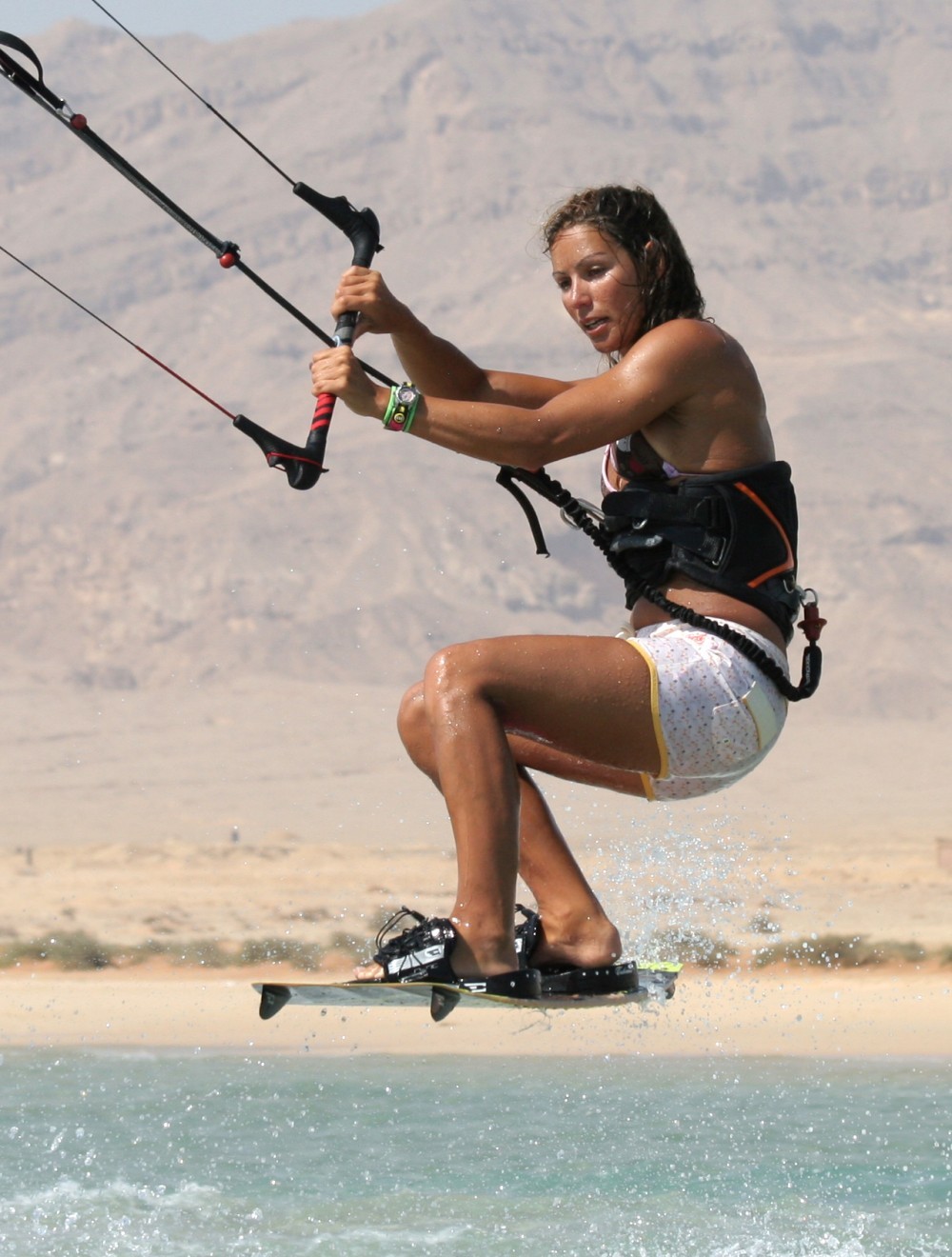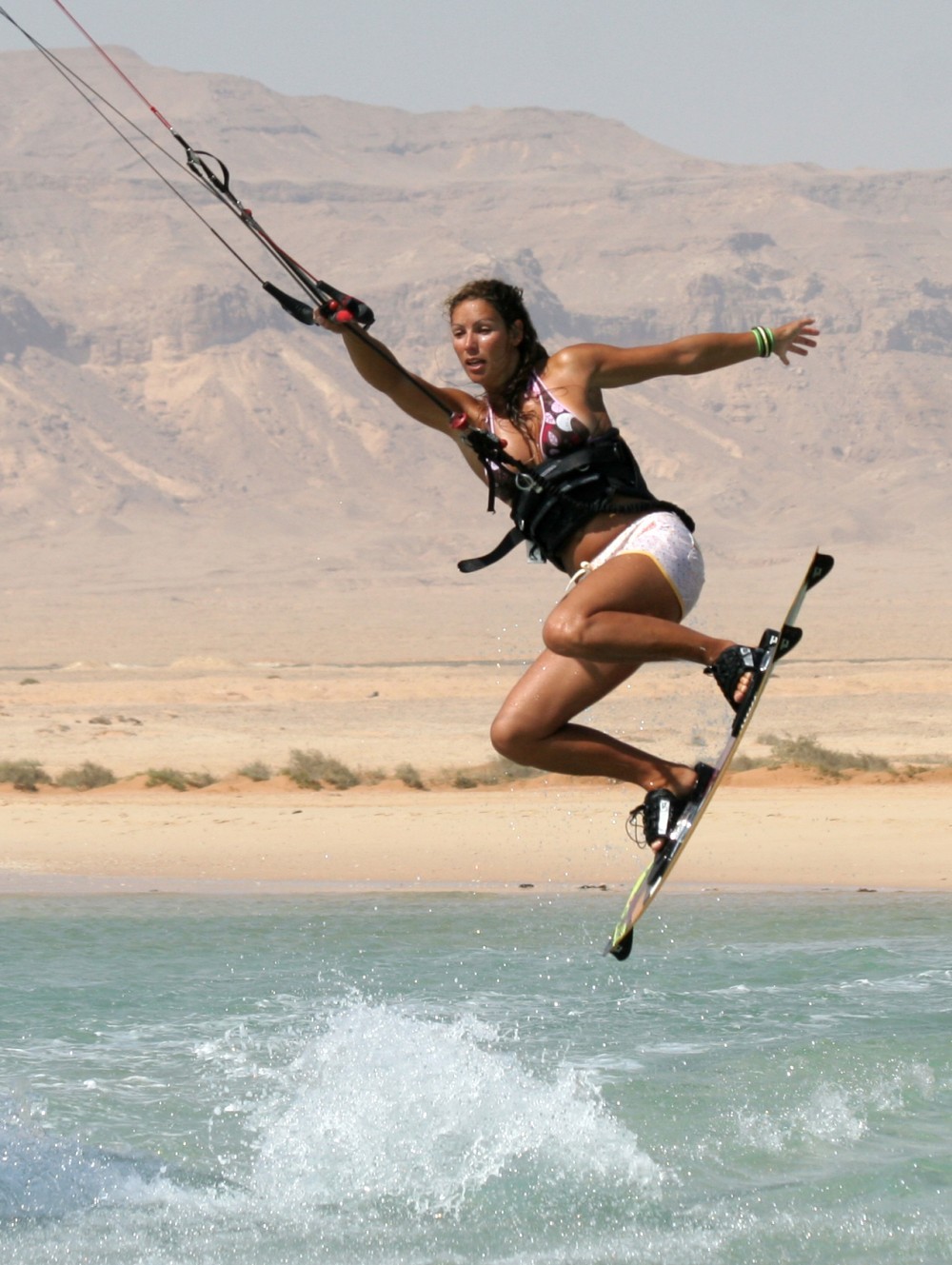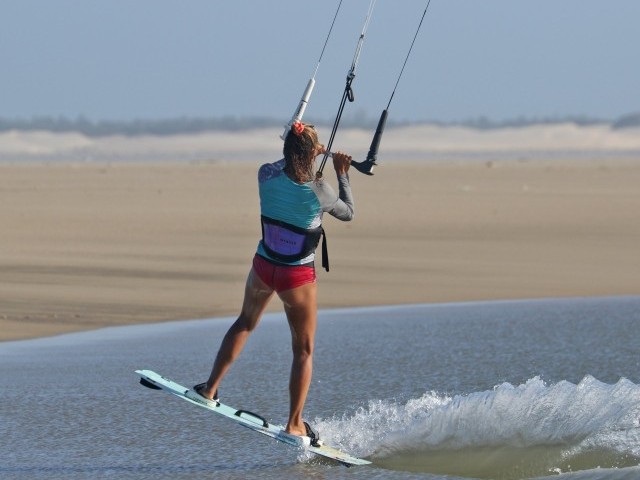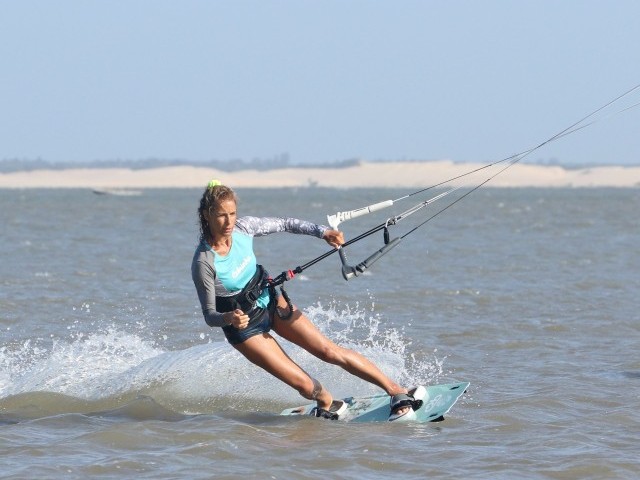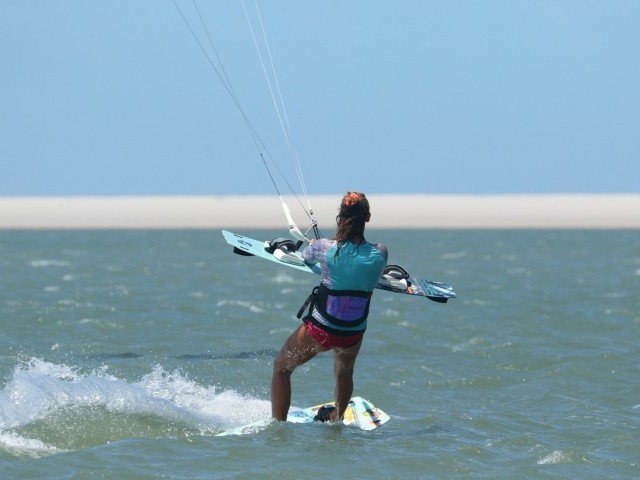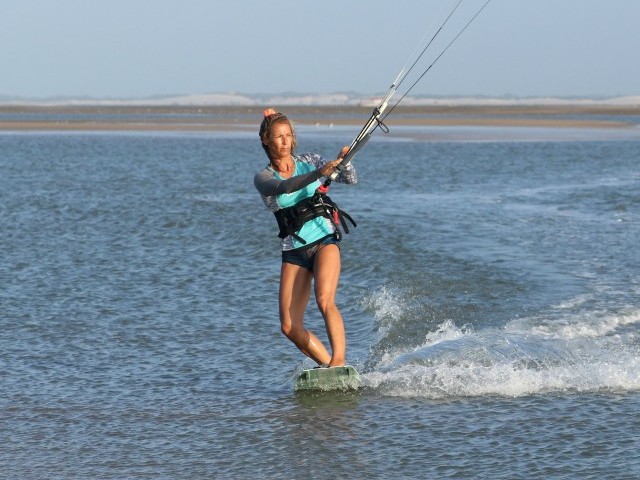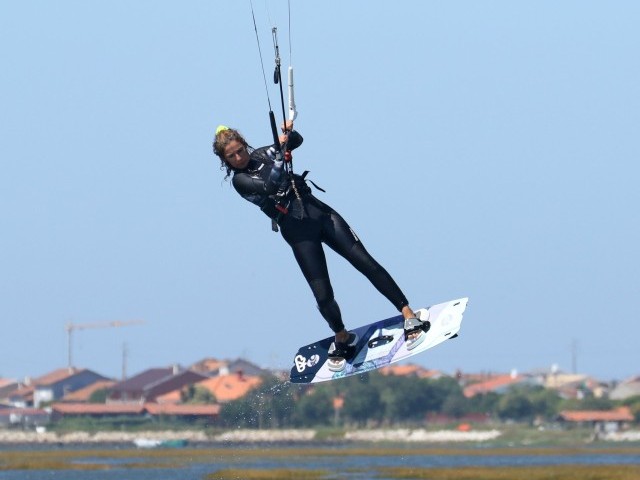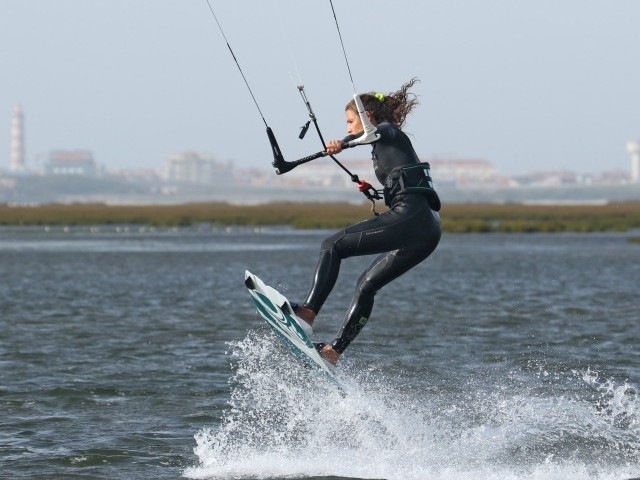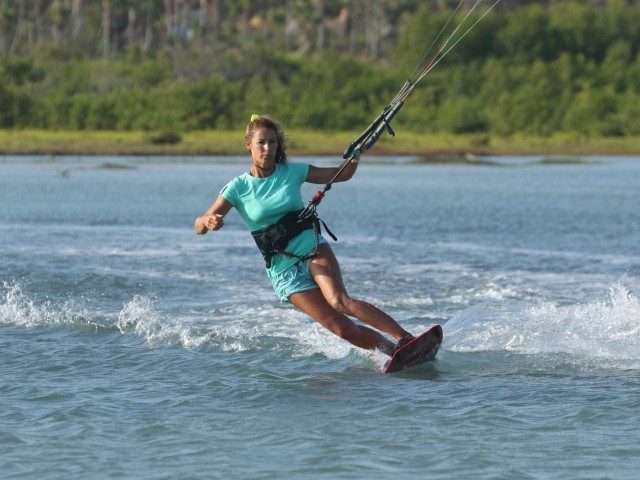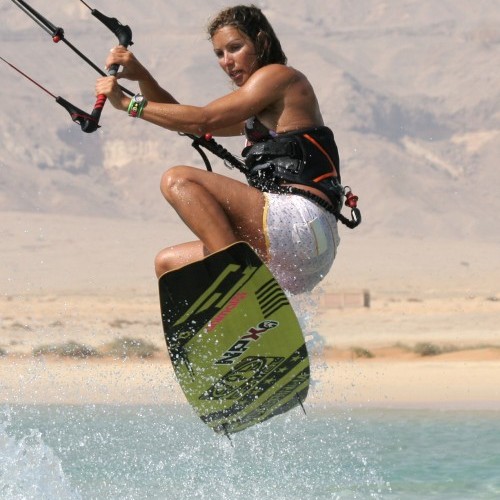
Popping off a Wave / Chop
Technique / Beginner
Introduction
Popping off a wave, wavelet or steep bit of chop as in Video 1, in many locations, is an inevitable and often unavoidable consequence of meeting one of the oceans naturally formed stunt ramps, as you speed out from the beach. When you know what you’re doing these obstacles become joyous kickers, but when you don’t know how to handle them, they are nothing more than a nuisance. So it’s a fine idea to understand how to take voluntary flight in preference to an uncontrolled panic stop and splash.
What’s more if you have not learnt how to pop yet, this is by and far the easiest way to master it. The position of you body, board and kite are all similar to that required for popping. The only difference is that the ramp is doing the work rather than your back leg. So once you get the hang of this adding a bit of back leg extension and getting real pop should be a doddle.
If you ponder sports which involve airtime, minus those that require jumping out of a plane or off something particularly high, participants tend to use ramps and speed to get air. Chances are you may already have voluntarily jumped of a ramp at some stage in your life? If not, now’s your chance!
Using a Ramp
If you have jumped a bike, board, skis or shopping trolley you’ll be familiar with the idea that whatever you’re riding must follow the shape of the ramp. Whether it is a two-inch piece of chop or a meaty clean wave face you’ll be aiming to ride your board up the ramp.
For the ease of imagination, picture a waist high wave rolling towards the nose of your board. Firstly continue to ride on your edge as per normal. Don’t think about standing up and jumping off your legs. Let the ramp do the work.
At one stage as you ride up the wave the nose of your board will be at the top and the tail at the bottom, as if you were performing a wheelie. This will result in an upward wheelie take off as in Pic A. This can only happen if your body allows it to. For example if you lent forward as you approached the wave, they’d be a chance that you’d bury the nose into said wave. Not a good look. So you’ll need to get your weight back by parking your bum over your back foot and slightly extending your front leg.
By allowing the board to climb the ramp with speed, you will take off automatically once you get to the top. Most off you are no doubt all to well aware of this.
Control Freak
To be taking off in the first place you’ll need some speed, especially in cross-onshore mush. As you can see from the previous take off picture, Karine has both hands on the bar. This enables her to be in control of the kite. She can keep the bar in and therefore the power on. To stay fully in control she also does not drift the kite up, but keeps it positioned as if she were riding along on the flat.
Once you are airborne you need to maintain this control. You need power and speed to keep you moving in the air. Although this doesn’t always seem like a great idea, it does result in more balance whilst popping. Also you’ll need to stop leaning back so that you can get back over the board.
Looking at Pic B. you can see that as soon as she has taken off, Karine brings her legs up. She lifts her knees up towards her hands, so the board stays flat beneath her and is ready to land on. By looking where she wants to go Karine brings her head and shoulders forward. Karine still has the kite in a “park and ride” position with the bar sheeted in. By doing this the kite helps Karine get her weight back over the board from her leaning back take off. All in all, she is now balanced and in control.
Go With It
Now that you’re tucked up and riding the air, you have lost all possible forms of resistance. Your edge is not in contact with the water, so the kite pulls you towards it. This is the moment when many kiters will get it wrong. As they feel themselves drifting slightly downwind towards the kite, they fight or abandon ship. Rather than fighting, you need to take the reigns and kick on. In Pic C. Karine is on her way back towards the water. You can see that she has pushed her front foot forward and pulled her back foot right under her derriere. This scissoring of the legs pushes the nose of the board off the wind, so that the board will land going towards the kite, and not on an edge. This way Karine will be able to drop her legs, absorb the landing and then carve back onto her edge once she’s balanced. In many cases it’s a good idea to dive the kite slightly to pull your self out of the drop. You can see that Karine’s bar has definitely steered the kite down.
In brief if you look at the picture, the board, Karine’s front shoulder and her head are all following the pull of the lines.
Considerations
There are a few other factors to take into consideration when using a ramp. Wind direction is going to affect the angle at which you hit a wave and therefore your real speed up the ramp.
If there are waves and the wind is cross-shore, it should be fairly easy to set your self up. If the wind is offshore it’ll be tricky to learn and if you can’t already do it then you should be questioning why you’re out in this wind direction. If its cross-onshore you’ll need to make sure you have a lot of speed as when you turn up into the wave you’ll slow down. If it’s onshore try using the chop, as any waves will be too up into wind for you to have any speed.
Following Sequence 1
- Pic 1. Riding as per normal Karine has her kite no higher than 11 o’clock and preferably a tad lower. She has a good edge and is heading upwind watching the water in front of her.
- Pic 2. Karine spots a wavelet of choice in front of her and focuses her attention on it as it rolls towards her and she races towards it.
- Pic 3. Just a Karine reaches the ramp she turns up into it. You can see how her board is carving up, turning away from the camera as Karine drops her weight back, by moving her hips towards the back of the board.
- Pic 4. As Karine rides up the ramp she stays on her edge and does not soften her legs to absorb the ramp, but resists by pushing the board away from her whilst keeping her weight back. You can see how Karine keeps the power on, her bar is sheeted in and if anything she has steered her kite forwards.
- Pic 5. As Karine rides off the top of the ramp she becomes airborne. She is looking forward to where she is going, she has both hands on the bar and still has the bar sheeted in, and she has not snuck the kite up, but keeps it where it started.
As a progression, once you can take off like this try extending your back leg by kicking it away from you violently as you approach the top of the ramp. This will give you extra pop, and is the same technique that you can then use on flat water, once you can get the extra speed necessary by bearing away.
Following Sequence 2
- Pic 1. As soon as she is in the air Karine pulls her knees up towards her hands and looks towards where she thinks/hopes she might land.
- Pic 2. She then pulls her back foot up and under her bottom. Note her bar is still sheeted in with both hands.
- Pic 3. Karine pushes her front foot forward towards the kite by extending her front leg, so that she and her board are now pointing at the kite.
- Pic 4. As Karine drops she dives the kite down with her front hand to pull her out of the fall. And she drops her feet down in anticipation of landing.
- Pic 5. Karine absorbs the landing with her knees. She has landed tail first following the kite. She can now carve back onto her edge and hunt out the next stunt ramp.
Looking at sequence 2 you can see how Karine jumps by turning into the wind and then almost curves away from it, much like a bird or plane banking, or a Frisbee thrown into the wind. You can see this in the slow mo Video 2.
Common Problems
1. Without doubt most kiters find themselves suffering from lack of commitment as soon as the ramp in front of them gets bigger than anything they’ve tackled before.
The result can be seen in Pic D. quite clearly. As Karine gets pitched up into the air as a result of a larger steeper ramp and her speed she has mimicked what we all do when we bottle it. Thinking that she’ll not keep her shape and balance, she abandons all hope of doing so by letting go with her front arm. She then flays this about hoping that she’ll have more balance. However you can see that this pulls her leading shoulder back, which results in her turning more upwind and away from the kite when she should be turning downwind and towards the kite.
This also means that she can’t keep the kite sheeted in as only holding the bar with her back hand, the kite will rise, so she lets it out. With no pull from the kite Karine can’t get her weight forward. She can’t dive the kite with her missing front hand either. The result is that she’ll just drop down into the water with the kite flapping above her.
To combat this there are two things that will help. Firstly if it is all you concentrate on keep your front hand on the bar and fly the kite lower than you think you should, especially if the sea is rough.
Secondly if the ramp is looking somewhat imposing, and is a tad large, slow down. It’s better to be in control going off the top. Once you are launching you can then attack, by diving the kite with two hands on the bar, which will pull you out of the drop for a softer more downwind landing.
2. As already mentioned if the wind has some onshore in it, you are likely to lose a lot of speed and forward momentum when you turn up into the wave. This can easily result in you not having enough speed to actually jump off the top of the ramp.
To compensate for this loss of speed you need to accelerate before you turn up into the ramp. In simple terms try not to sail hard upwind but relax your edge and allow the board to be pulled slightly off the wind by the kite so that you pick up speed. You can then turn back up into the wave. This may well take some practice as it is in essence the principal of popping!
Keystones
- Stay on edge
- Move weight back
- 2 hands on bar
- Scissor legs
- Dive kite
This technique article was in Issue 18 of IKSURFMAG.
Related
By Christian and Karine
Christian and Karine have been working together as a coaching team, running improver to advanced kitesurfing clinics since 2003.




